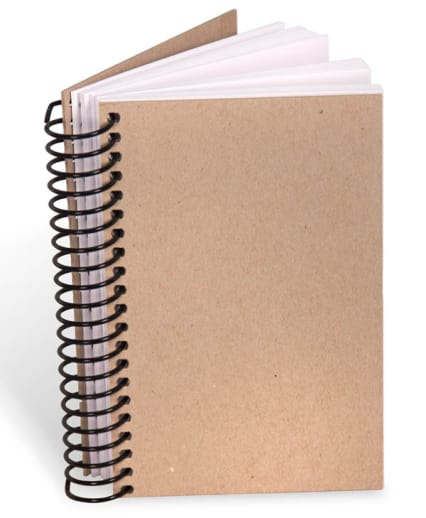The Eco Sketch Journal is the perfect companion for your creativity! This plain spiral-bound notebook features 100 sheets of blank paper ideal for sketching, drawing, writing, or scrapbooking. You can even customize the cover with your own designs! If you want to journal on the go, the 5.5" x 8.5" size also makes it easy to carry with you. It’s a great choice for anyone who loves to add their own personal touch to their journals! ~Alex
Eco Sketch Journal (5 1/2" x 8 1/2") 100 sheets
SKU
036095
Grade PK-AD
These icons are designed to help you quickly understand and learn important information about our products.
Teaching Method
Traditional
Teacher-centered curriculum commonly used in classrooms that may include a text, teacher manual, tests, etc.
Charlotte Mason
A methodology based on the work of a 19th century educator who maintained that children learn best from literature (Living Books), not textbooks.
Classical
A methodology based on the Latin Trivium (three stages of learning), including the grammar stage (memorization and facts), logic stage (critical thinking), and rhetoric stage (developing/defending ideas).
Unit Study
A thematic or topical approach centered around one topic that integrates multiple subject areas.
Montessori (Discovery)
A methodology based on the work of a 20th century educator that emphasizes student and sensory-driven discovery learning and real-life applications.
Other
Other methodologies
Religious Content
Secular
Contains content contrary to common Christian beliefs (i.e. evolution).
Neutral
Avoids religious or theoretical topics or presents multiple viewpoints without preference.
Christian/Religious
Faith-based or including instructional religious content.
Learning Modality
Auditory
Learns through listening, talking out loud or reading out loud.
Visual
Learns through seeing, prefers written instructions and visual materials.
Kinesthetic/Tactile (Hands-On)
Learns through moving, doing and touching.
Multi-Sensory
Curriculum that employ a variety of activities/components.
Presentation
Sequential
Curriculum progresses through well-defined learning objectives. Emphasizes mastery before moving to the next topic.
Spiral
Topics and concepts are repeated from level to level, adding more depth at each pass and connecting with review.
Conceptual/Topical
Focus is on the “why,” often with a unifying concept as well as specific skills; coverage may be broader.
Teacher Involvement
Low Teacher Involvement
Student-led materials; parent acts as a facilitator.
Medium Teacher Involvement
A mix of teacher-led time and independent student work.
High Teacher Involvement
Teacher-led lessons; may utilize discussions, hands-on activities and working together.
Additional Materials Required
No other materials needed
Everything you need is included.
Other Materials Required
There are additional required resources that are a separate purchase.
Other Materials Optional
There are additional resources mentioned or recommended but are not absolutely necessary.
Consumable
Consumable
Designed to be written in; not reusable.
Non-Consumable
Not designed to be written in; reusable.
Our Price
$16.71 $16.71 $6.95
Rainbow Savings: $9.76
Product Overview
- Customizable Journal: Decorate the cover and pages in this little journal!
- Perfect Size: Compact and portable for on-the-go creativity
- Versatile Use: Ideal for sketching, drawing, writing, scrapbooking, and more
Description
Publisher's Description of Eco Sketch Journal (5 1/2" x 8 1/2") 100 sheets
A plain covered pad that longs to be "dressed up" by its new owner or simply left as is. These drawing pads are spiral bound with sturdy blank chipboard covers. They are the finest quality 60lb. paper without the expense of a printed cover. Ideal for charcoal, pencil, pastels, or scrapbooking.
Category Description for Eco Sketch Journals
Affordable sketchpads that are a must for any artist, big or small! Each spiral bound pad features 60 lb. paper with a fine tooth surface for drawing in graphite, colored pencil, crayon, and pastels. Here's the best part - you can customize the blank kraft chipboard cover with your own creative doodles and designs in pen, ink, or markers. Each sketchpad includes 100 sheets. ~ Emily
Details
| Product Format: | Other |
|---|---|
| Grades: | PK-AD |
| Brand: | Jack Richeson |
| EAN/UPC: | 717304963695 |
| Length in Inches: | 8.5 |
| Width in Inches: | 6.375 |
| Height in Inches: | 1.375 |
| Weight in Pounds: | 0.85 |
Videos
Reviews

